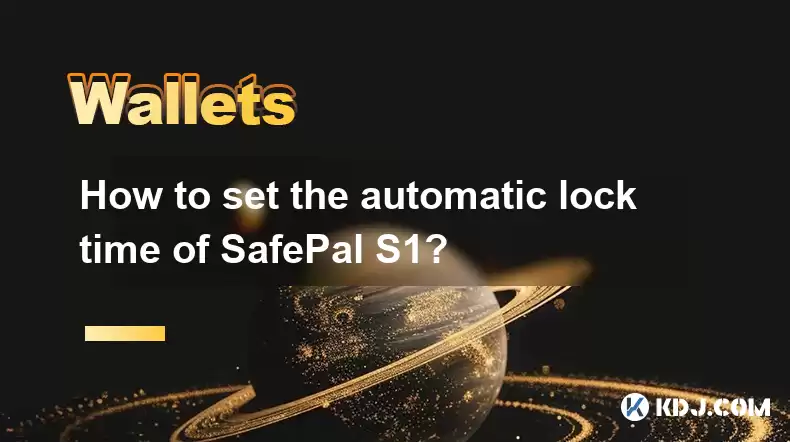-
 Bitcoin
Bitcoin $119000
-2.21% -
 Ethereum
Ethereum $4315
1.01% -
 XRP
XRP $3.151
-3.11% -
 Tether USDt
Tether USDt $0.0000
0.00% -
 BNB
BNB $808.5
-0.71% -
 Solana
Solana $175.8
-4.21% -
 USDC
USDC $0.9999
0.00% -
 Dogecoin
Dogecoin $0.2250
-3.92% -
 TRON
TRON $0.3469
1.77% -
 Cardano
Cardano $0.7818
-3.81% -
 Chainlink
Chainlink $21.47
-2.10% -
 Hyperliquid
Hyperliquid $43.30
-6.81% -
 Stellar
Stellar $0.4370
-2.84% -
 Sui
Sui $3.682
-4.40% -
 Bitcoin Cash
Bitcoin Cash $590.8
2.67% -
 Hedera
Hedera $0.2484
-5.20% -
 Ethena USDe
Ethena USDe $1.001
0.00% -
 Avalanche
Avalanche $23.10
-4.29% -
 Litecoin
Litecoin $119.2
-3.96% -
 Toncoin
Toncoin $3.409
0.90% -
 UNUS SED LEO
UNUS SED LEO $9.016
-1.29% -
 Shiba Inu
Shiba Inu $0.00001304
-3.82% -
 Uniswap
Uniswap $11.18
1.33% -
 Polkadot
Polkadot $3.913
-3.51% -
 Cronos
Cronos $0.1672
-3.08% -
 Dai
Dai $1.000
0.02% -
 Ethena
Ethena $0.7899
-4.70% -
 Bitget Token
Bitget Token $4.400
-1.23% -
 Pepe
Pepe $0.00001132
-5.93% -
 Monero
Monero $257.9
-6.44%
How to set the automatic lock time of SafePal S1?
SafePal S1's auto-lock feature locks the device after inactivity, customizable from 1 to 30 minutes, balancing security and convenience for users.
Mar 27, 2025 at 03:15 pm

Understanding SafePal S1 Auto-Lock Functionality
The SafePal S1 hardware wallet prioritizes security. A key feature contributing to this is its auto-lock function. This automatically locks your device after a period of inactivity, preventing unauthorized access should you misplace it or leave it unattended. This time period is customizable, allowing you to balance convenience with security. The shorter the time, the more secure your wallet, but the more frequently you'll need to unlock it.
Steps to Adjust the Auto-Lock Time on Your SafePal S1
To change the auto-lock time on your SafePal S1, follow these steps:
Step 1: Navigate to Settings: Power on your SafePal S1 and navigate to the settings menu. This is usually represented by a gear icon or similar symbol. The exact location may vary slightly depending on your firmware version, so refer to your device's on-screen instructions if needed.
Step 2: Locate Auto-Lock Settings: Once in the settings menu, scroll through the options until you find "Auto-Lock Time" or a similarly named setting. This setting controls the inactivity period before your device automatically locks.
Step 3: Select Your Preferred Time: You'll be presented with a selection of time options. Common options include 1 minute, 5 minutes, 15 minutes, 30 minutes, and potentially others. Carefully choose the time that best balances your security needs and usage convenience. A shorter time offers greater security, but requires more frequent unlocking.
Step 4: Save Changes: After selecting your desired auto-lock time, save your changes. This usually involves pressing a confirmation button or navigating back to the main settings menu. Your SafePal S1 will now automatically lock after the selected period of inactivity.
Step 5: Verification: To ensure the change has taken effect, leave your SafePal S1 idle for a period longer than the time you selected. It should automatically lock, requiring your PIN to unlock.
Understanding the Implications of Different Auto-Lock Times
Choosing the right auto-lock time is crucial. A shorter time (e.g., 1 minute or 5 minutes) provides maximum security but can be inconvenient if you frequently use your device. Longer times (e.g., 15 minutes or 30 minutes) offer greater convenience but increase the risk of unauthorized access if the device is lost or left unattended. Consider your personal risk tolerance and usage patterns when making your selection. Remember, this is a critical security setting; don't rush the decision.
Advanced Security Considerations Beyond Auto-Lock
While the auto-lock function is a vital security feature, it's not the only measure you should take to protect your cryptocurrency. Consider these additional security best practices:
Strong PIN: Choose a strong and unique PIN that is difficult to guess. Avoid using easily guessable combinations like birthdays or sequential numbers.
Regular Firmware Updates: Keep your SafePal S1 firmware updated to the latest version. Updates often include security patches that address potential vulnerabilities.
Physical Security: Store your SafePal S1 in a safe and secure location, away from prying eyes.
Never Share Your Seed Phrase: Your seed phrase is the key to accessing your funds. Never share it with anyone, under any circumstances. SafePal will never ask for your seed phrase.
Troubleshooting Auto-Lock Issues
If you encounter any problems with the auto-lock function, such as it not working correctly or unexpected behavior, try these troubleshooting steps:
Restart Your Device: A simple restart can often resolve minor software glitches.
Check Firmware Version: Ensure your SafePal S1 is running the latest firmware version. Outdated firmware can sometimes cause unexpected behavior.
Contact SafePal Support: If the problem persists, contact SafePal's customer support for assistance. They can help diagnose and resolve the issue.
Frequently Asked Questions
Q: What happens if I forget my SafePal S1 PIN?
A: If you forget your PIN, you will need to use your recovery seed phrase to recover access to your wallet. Keep your recovery seed phrase in a safe and secure location, separate from your device. Never share it with anyone.
Q: Can I disable the auto-lock feature entirely?
A: While the specific options may vary depending on your firmware version, generally, you cannot completely disable the auto-lock feature. This is a critical security measure implemented to protect your funds.
Q: How long does it take for the SafePal S1 to auto-lock?
A: The auto-lock time is customizable. You can choose from various options like 1 minute, 5 minutes, 15 minutes, and 30 minutes, allowing you to find a balance between security and convenience.
Q: What should I do if my SafePal S1 auto-locks unexpectedly?
A: This is uncommon. If it happens frequently, check for firmware updates. If the problem continues, contact SafePal support. Make sure your device isn't being accidentally bumped or pressed.
Q: Is the auto-lock time setting stored on the device itself or on a server?
A: The auto-lock time setting is stored locally on your SafePal S1 device itself. This enhances security as it does not rely on external servers which could be vulnerable to attacks.
Disclaimer:info@kdj.com
The information provided is not trading advice. kdj.com does not assume any responsibility for any investments made based on the information provided in this article. Cryptocurrencies are highly volatile and it is highly recommended that you invest with caution after thorough research!
If you believe that the content used on this website infringes your copyright, please contact us immediately (info@kdj.com) and we will delete it promptly.
- Circle Stock, Blockchain, and Strong Earnings: A Bullish Outlook
- 2025-08-12 22:30:12
- Nexchain, Crypto Presale, and Rankings: What's the Buzz?
- 2025-08-12 22:30:12
- Arc Blockchain: Circle's Layer-1 Play Amidst $428 Million Loss
- 2025-08-12 20:30:13
- XRP Price: Riding the Bull Cycle Wave or Hitting a Wall?
- 2025-08-12 20:50:12
- Cloud Mining in 2025: Chasing Passive Income and High Returns
- 2025-08-12 20:30:13
- XRP Price Forecast: Can XRP Hit $8, $12.60, or Even $100? Surge Drivers Analyzed
- 2025-08-12 21:10:13
Related knowledge

How to manage your portfolio in Exodus wallet
Aug 08,2025 at 10:07pm
Understanding the Exodus Wallet InterfaceThe Exodus wallet is a non-custodial cryptocurrency wallet that supports a wide range of digital assets. When...

How to reset your MetaMask password
Aug 08,2025 at 01:28pm
Understanding the MetaMask Password Reset ProcessMany users confuse the MetaMask password with the seed phrase or private key, but they serve differen...

How to buy Dogecoin on MetaMask
Aug 08,2025 at 03:42am
Understanding Dogecoin and MetaMask CompatibilityDogecoin (DOGE) is a popular meme-based cryptocurrency that operates on its own blockchain, originall...

How to switch between networks in Trust Wallet
Aug 09,2025 at 11:07am
Understanding Network Switching in Trust WalletSwitching between networks in Trust Wallet allows users to manage assets across different blockchains, ...

How to set up Face ID for MetaMask
Aug 12,2025 at 02:42am
Understanding Face ID and Its Role in MetaMask SecurityMetaMask is a widely used cryptocurrency wallet that allows users to interact with the Ethereum...

How to set up Face ID for MetaMask
Aug 11,2025 at 09:28am
Understanding Face ID and Its Role in MetaMask SecurityFace ID is a biometric authentication system developed by Apple that uses facial recognition to...

How to manage your portfolio in Exodus wallet
Aug 08,2025 at 10:07pm
Understanding the Exodus Wallet InterfaceThe Exodus wallet is a non-custodial cryptocurrency wallet that supports a wide range of digital assets. When...

How to reset your MetaMask password
Aug 08,2025 at 01:28pm
Understanding the MetaMask Password Reset ProcessMany users confuse the MetaMask password with the seed phrase or private key, but they serve differen...

How to buy Dogecoin on MetaMask
Aug 08,2025 at 03:42am
Understanding Dogecoin and MetaMask CompatibilityDogecoin (DOGE) is a popular meme-based cryptocurrency that operates on its own blockchain, originall...

How to switch between networks in Trust Wallet
Aug 09,2025 at 11:07am
Understanding Network Switching in Trust WalletSwitching between networks in Trust Wallet allows users to manage assets across different blockchains, ...

How to set up Face ID for MetaMask
Aug 12,2025 at 02:42am
Understanding Face ID and Its Role in MetaMask SecurityMetaMask is a widely used cryptocurrency wallet that allows users to interact with the Ethereum...

How to set up Face ID for MetaMask
Aug 11,2025 at 09:28am
Understanding Face ID and Its Role in MetaMask SecurityFace ID is a biometric authentication system developed by Apple that uses facial recognition to...
See all articles

























































































